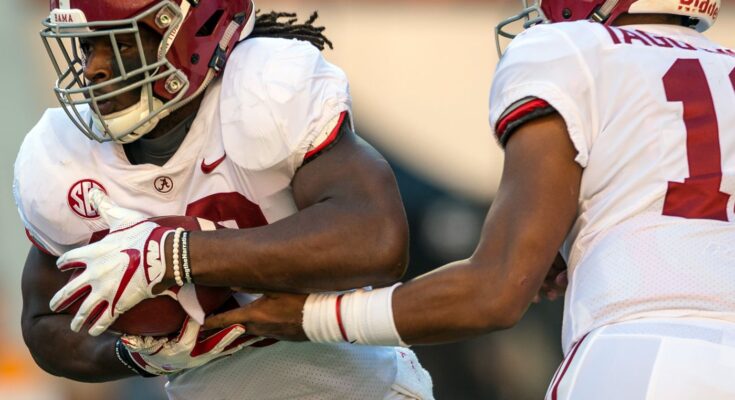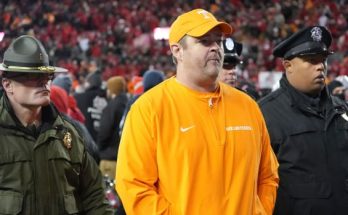Alabama Football Summer Report: Can the Crimson Tide Harness Their Deepest Defensive Backroom Talent Yet?
Alabama football has long been synonymous with elite talent, relentless recruiting, and a tradition of excellence under Coach Nick Saban. As the Crimson Tide gears up for another intense season, all eyes are on one of the most promising — yet crowded — position groups on the roster: the defensive backs. This summer, Alabama finds itself with an overflowing crop of talent in the secondary, sparking both excitement and strategic questions about how the coaching staff will manage such depth.
The defensive backroom at Alabama has always been a key pillar in their defensive dominance, but the sheer volume of skilled players now competing for limited spots creates a fascinating dynamic. How will the coaching staff distribute snaps, balance experience with youth, and develop this talented group into a cohesive unit capable of stifling even the most explosive offenses? Let’s dive deep into what this talent surplus means for the Crimson Tide’s defensive outlook this season.
First, it’s worth understanding just how stacked Alabama’s secondary is entering summer camp. Between returning veterans, highly rated transfers, and one of the most heralded recruiting classes in recent memory, the Tide boast a secondary that rivals many NFL rosters in terms of sheer ability.
Returning starters bring valuable game experience and leadership, while the newcomers offer raw athleticism and versatility. Alabama has several players who can seamlessly shift between cornerback, safety, and nickel roles, providing defensive coordinator Pete Golding with a wealth of schematic options. The flexibility this affords is a dream for any defensive coach but also presents a puzzle: who earns the starting nods, and who becomes a key rotational player or situational specialist?
Depth on defense is crucial, especially in a grueling SEC schedule where injuries are common and opponents often throw multiple formations and personnel groupings at defenses. Alabama’s overflowing DB room means the team will likely have the luxury of fresh legs late in games, potentially giving them a speed and stamina edge.
However, managing depth also requires careful handling of egos and expectations. Players hungry for playing time must understand the value of competing not only for starting roles but also for critical roles in nickel, dime, and special teams packages. This can be a balancing act — ensuring that the talent pool remains motivated and united while emphasizing team success over individual glory.
One of Alabama’s greatest strengths in recent years has been the versatility of its defensive backs. The ability to interchange players across safety, corner, and slot positions confounds opposing offenses and creates matchup nightmares.
This season’s crop includes several multi-positional athletes who can cover the slot receiver, blitz the quarterback, or drop into deep coverage with equal proficiency. Such versatility allows Alabama’s defense to disguise coverages and pressure schemes, making it tougher for opposing quarterbacks to find open targets.
Moreover, the presence of talented hybrid safety-linebacker types means Alabama can seamlessly shift from a base defense to sub-packages without changing personnel — a modern necessity in today’s fast-paced college offenses.
While experience is invaluable, Alabama’s staff has always been adept at developing younger players quickly. With this much depth, some of the freshman and sophomores may have to settle for limited snaps early on. However, summer practice and fall camp will be critical for these players to showcase their skills and earn trust.
Alabama’s reputation for molding NFL-ready defensive backs means that even rotational players receive elite coaching, strength and conditioning support, and film study guidance. This summer will likely see intense competition in practice, which will elevate the entire group’s play and push the veterans to maintain their edge.
Having an overflowing DB room could allow Alabama to take more aggressive risks defensively. Knowing they can rotate fresh players into coverage or blitz packages may encourage more complex and unpredictable looks.
Defensive coordinator Pete Golding might experiment more with disguised coverages, press-man tactics, or zone blitzes — all designed to confuse quarterbacks and create turnovers. The ability to rely on multiple skilled athletes at all levels of the secondary could lead to a rise in interceptions and pass breakups, helping the Tide maintain dominance in the turnover battle.
Interestingly, the surplus in defensive backs may indirectly affect Alabama’s front seven. With a secondary that can cover well and stay fresh, linebackers and linemen might feel empowered to be more aggressive in pass rush and run defense. This synergy could elevate the entire defense to new heights, making Alabama even tougher to score against.
At the same time, the coaching staff will need to carefully integrate this depth with the pass rush to avoid communication breakdowns or mismatches. Defensive cohesion is paramount, and this summer will focus heavily on synchronizing these units.
One often overlooked aspect of a deep DB room is the positive impact on special teams. Defensive backs often play key roles on punt and kickoff coverage teams due to their speed and tackling ability.
Having more high-caliber defensive backs available means Alabama can field faster and more disciplined coverage units, reducing opponent return yardage and occasionally setting up scoring opportunities with good field position. Some of the talented backups may carve out valuable roles as special teams aces, contributing early while waiting for more defensive snaps.
As fall camp progresses and the regular season approaches, the burning question remains: how will Alabama’s coaching staff handle this overflow of DB talent in game situations?
Historically, Saban’s team emphasizes “next man up” mentality and rewards performance and preparedness. The competition will be fierce but fair, and players who demonstrate consistency, football IQ, and coachability will likely see the field more often.
Fans should expect some early-season rotation to keep players fresh and gauge which combinations work best. As injuries inevitably happen over the long campaign, the depth will prove its worth. Ultimately, Alabama’s overflowing defensive backroom may become one of the defining advantages that propels the Crimson Tide toward championship contention once again.
The overflowing talent in Alabama’s defensive backroom is both a blessing and a challenge. It embodies the program’s relentless commitment to recruiting and player development while pushing coaches and players to manage competition and chemistry.
If harnessed correctly, this depth could lead to a suffocating secondary that can shut down the nation’s best passing attacks and generate game-changing plays. This summer report underscores that Alabama’s defensive backfield is not just deep; it is a potential game-winning fortress ready to leave a lasting imprint on the 2025 season.
As fans watch the practices, fall camp battles, and early-season matchups unfold, one thing is certain — Alabama’s secondary will be a captivating storyline all season long.



